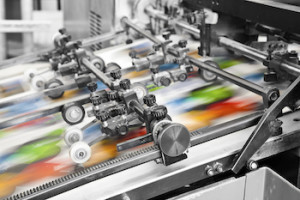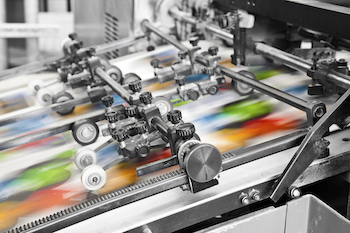Marketing Materials – What’s The Difference?
 Flyers, brochures, leaflets, booklets – there are so many types of collateral out there. What do all those names mean? And when is it appropriate to use one as opposed to another? Tripepi Smith is here to help you sort through the paperwork.
Flyers, brochures, leaflets, booklets – there are so many types of collateral out there. What do all those names mean? And when is it appropriate to use one as opposed to another? Tripepi Smith is here to help you sort through the paperwork.
Flyer
A flyer is also known as a leaflet, circular or handbill. It’s a single piece of paper, often printed on lower quality paper with only black ink. Flyers are an inexpensive way to distribute information to a large group of people in a short amount of time.
If meant for hanging, then flyers are usually printed on one side only of standard 8 ½” by 11” paper. But if meant for distribution, they are often smaller and can be printed on both sides. They are meant to be inexpensive, as they are considered “throw-away” marketing pieces. A flyer will most likely be distributed or hung in public places, and the expectation is that some will get a passing glance before being thrown away.
Flyers are most effective at offering a small amount of information that is applicable for a limited time. Hence, events are a popular way to use them. Examples include:
- City fireworks show
- Public library opening
- Fact sheet for distribution at a conference
Be careful with a flyer. On one hand they appear folksy and down to earth. On the other, they can cheapen a brand. You don’t usually see a flyer for Tiffany handbags, and if you do, you can reasonably assume the bags will be knockoffs.
Brochure
A brochure is an unbound, multi-page printed product. It’s typically a single sheet of paper and folded to create a bifold or trifold piece, though we are fans of simple two sided slicks because they show well in print and online PDF. Brochures are printed on heavier weight paper using multiple colors and, thus, are more expensive to produce than flyers.
Brochures require more technical expertise to produce than flyers. The alignment of the folds, layout, and design must be precise in order to create a professional and quality product. A graphic designer is highly recommended when producing a brochure.
Because of the time and expense associated with producing brochures, these are not handed out as freely as flyers or business cards and the information should be more evergreen. Brochure are not intended to just be randomly mailed as a solicitation. Brochures are often used as marketing materials for companies to help educate potential customers or provide leave behind talking points. They are a great way to highlight your products or ideas for those already interested and can substitute for them having to take notes.
Booklets and Pamphlets
Booklets, by definition, are always bound, with staples, saddle stitching, plastic comb, etc. They are multi-page and more complex to produce than brochures.
Pamphlets fall loosely under this category, as well. However, a pamphlet is unbound. It often consists of a few pages folded in half and saddle stapled at the crease. By definition, UNESCO states that a booklet or pamphlet must have “at least 5 but no more than 48 pages exclusive of the cover pages.” Anything longer will technically be a book.
Because of the binding, booklets are more durable than other printed materials, more costly to produce and the turnaround time is longer. And, as with brochures, proofing and alignment are more complex than with single sheet prints.
Booklets are used as promotional material, but not as often as flyers due to their relative cost. Effective uses for booklets include:
- Directories
- Product and Service Catalogs
- Manuals
- Annual Reports
Newsletters
A newsletter is a great way to keep your organization on the mind of your clients, constituents, or anyone in your target market in general. Because it is produced on a particular schedule (weekly, monthly, quarterly, etc.), a newsletter is an effective tool for reminding your market that you are a partner, ready to help them out. It shows that you are willing to pass along helpful information and tips, just as we are doing with this article. However, the content or major portions of the content, are generally more timely in nature and thus the selection of content should be well-timed with the activities in your broader marketplace.
Content development for a newsletter is more complex than other marketing materials, as it must be well-written, fresh for each new edition, and of particular interest to your target audience. Distribution of a newsletter can be rather costly, if printed and mailed, or inexpensive if distributed electronically through a mailing solution like Constant Contact, avoiding printing and mailing costs altogether.
What are Your Needs?
Need some help putting your marketing materials together? From graphic design and layout, to content creation and distribution, Tripepi Smith is well-versed in creating professional and effective collateral. Drop us an email to discuss your needs.


